There are tons of plants that grow in various shapes and forms. Some of them even grow to look like other creatures and objects in nature. Nobody knows why they grow this way, and it may seem surprising at first, but there is a natural beauty to every plant in one way or another.
Contents
One of the most curious forms taken by plants in nature is that of the human hand. Humans and plants are entirely different species, so how can they share such strong similarities in their form? Some of the plants that look like human hands are:
- The Devil’s hand tree (Chiranthodendron pentadactylon)
- The snake plant (Dracaena trifasciata)
- Anthurium fingers (anthurium pedatoradiatum)
- The white triumphator (Tulipa ‘white triumphator’)
- The Buddha’s hand tree (Citrus medica var. sarcodactylis)
The flowers, trees, and fruits mentioned in this list are all excellent examples of plants that look like human hands. Some of them are common indoor or garden plants. In contrast, others are typically found very rarely in nature and only in specific climates.
The natural habitats of these plants are vastly different, as is their plant family. Some are green, while others are white. Some are flowers, while others are fruit. Despite their infinite differences, they all share a likeness with hands.
This list details the characteristics of each of these plants, their significance, features that look like hands, and the environmental factors required for them to grow. Keep reading to learn more about these exotic and everyday plants.
Plants, flowers, and fruits grow in unpredictable ways, but some bear striking resemblances to other things. There are even those that look like human hands in various positions. Their leaves may look like the fingers of a hand or curl in the same way a hand would. Some of them have even been given a name based on their resemblance.
Many plant enthusiasts have wondered whether there are any plants that look like human hands. There is an answer to this, and it’s yes. This article lists five plants that, in some way, mimic the shape of a hand.
More plants looking like body parts: 9 Plants That Look Like Vagina | 10 Plants That Look Like Brains | 10 Plants That Look Like Boobs | 8 Plants That Look Like Hair | 6 Plants That Look Like Penises | 9 Plants That Look Like People
1. Devil’s Hand Tree
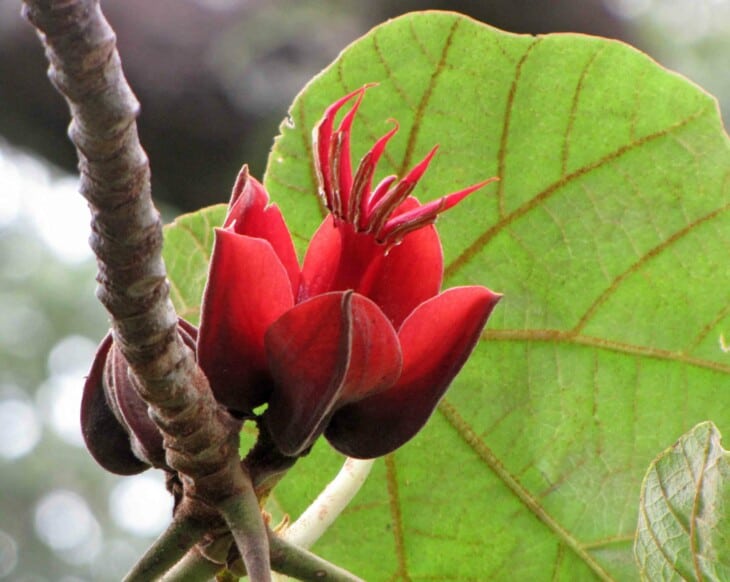
The Devil’s hand tree, with the scientific name Chiranthodendron pentadactylon, is native to Guatemala and Mexico. It makes this list because of its flowers’ uncanny resemblance to hands with long fingers. The flowers are red and yellow, with five thin leaves that look eerily like the clawed fingers on a hand.
The Devil’s hand tree had a religious significance to the Aztecs, and they believed the leaves could treat heart conditions and stomach pain when mixed into medicinal solutions. They grow well in the cloud forests of South America due to the mild temperatures and humidity. In recent years they have become an endangered species due to climate change and deforestation.
There is less space for them to grow each year as they seek higher ground and cooler temperatures. However, they have become popular to cultivate in North American gardens due to their flowers. The fruits of this tree are around four inches long with black seeds nestled inside and usually appear when the flowers bloom.
2. Snake Plant
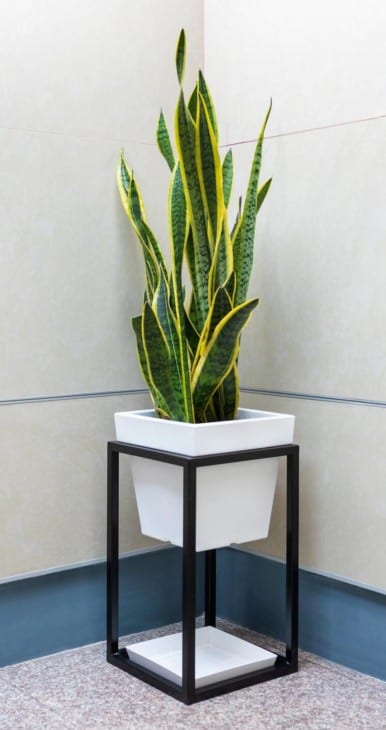
When mature, snake plants, otherwise known as Dracaena trifasciata, have broad, sharp leaves that grow straight up. However, young snake plants resemble fingers growing out of the ground. Spooky as they may look, they can be indoor or outdoor plants if the climate is suitable. The most common coloration of the snake plant is green leaves with yellow edges, though there are other variations.
Related: 9 Plants That Look Like Snake Plants
They are easy plants to care for, making them an excellent choice for busy or forgetful owners. The snake plant thrives in temperatures between 70 to 90 degrees Fahrenheit. Although it can survive in higher or lower temperatures, it can’t survive frost. If it lives outside and the temperature drops too far at night, it would be better to bring it inside to avoid damage.
Snake plants can adapt to most amounts of sun exposure. They can survive in direct sunlight as outdoor plants or in darker environments indoors. They are drought-resistant, but they can suffer damage from overwatering. They are an excellent choice for a house plant. Just be careful, as they are toxic to dogs and cats.
3. Anthurium Fingers
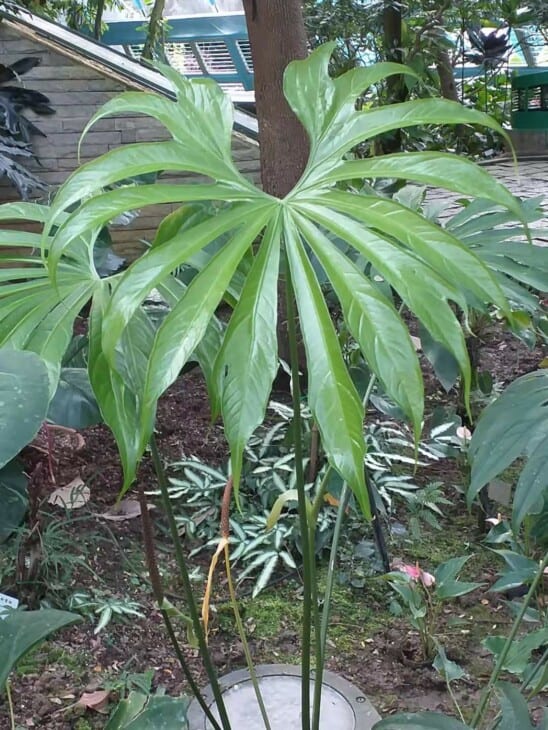
Anthurium fingers, or anthurium pedatoradiatum, is a tropical plant with leaves shaped like fingers. The name of this plant says it all. The leaves sprout outward from vertical stems and grow into finger-like shapes. As they mature and grow, they can sprout as many as thirteen fingers on each leaf in the right conditions.
Anthurium fingers are popular as houseplants because of their leaves’ hand-like shape and indirect light requirements. A couple of hours of indirect sun every day is enough for this plant to thrive, and it usually only needs water every 1 to 2 weeks. Anthurium fingers are easy-to-care-for, low-maintenance plants that make them suitable for all plant owners.
As a terrestrial plant, it’s best to recreate the Anthurium’s native environment for it to flourish. The best temperatures for them are around 70 degrees Fahrenheit, with relatively high humidity of about 50%. This could mean placing a humidifier near your pant may be necessary to ensure its leaves don’t dry out. It’s worth mentioning that Anthuriums are toxic to people and pets.
4. White Triumphator
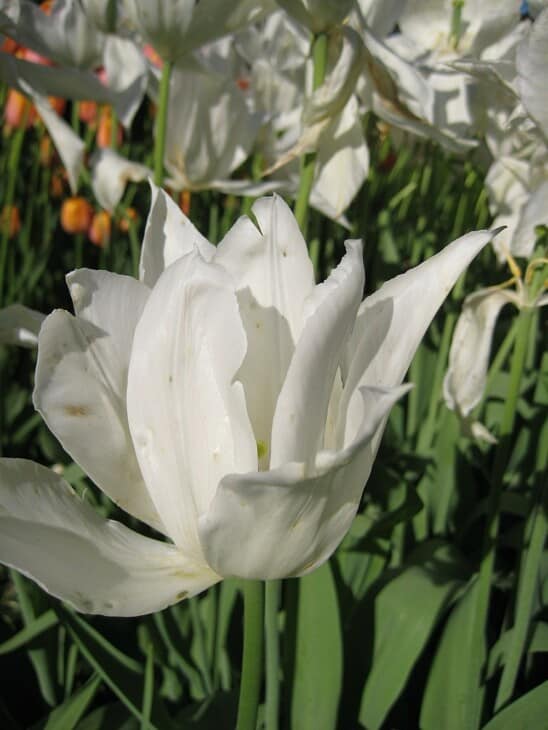
White Triumphators look like hands reaching for the sky. They are one of the most elegant types of flowers to have in a garden. They can be planted in flower beds or containers where they can enjoy the sun. Planting the bulbs of these flowers is best done in Autumn since they need relatively low temperatures to grow.
They do take around two or three years to start flowering. Still, they introduce a graceful element to their surroundings once they do. The bulbs should be planted around six inches deep in Autumn to protect them from higher temperatures. If the bulbs are damaged by too much heat, the roots will not grow properly, and the flower won’t bloom properly.
Once they have bloomed, White Triumphators will last for only around 2 weeks. After this, the bulbs can be harvested and replanted. They make excellent cut plants for vases to place inside homes and will last up to two weeks after being cut. Be sure to protect these delicate blossoms from the wind, as they may get damaged by a strong breeze.
5. Buddha’s Hand Tree
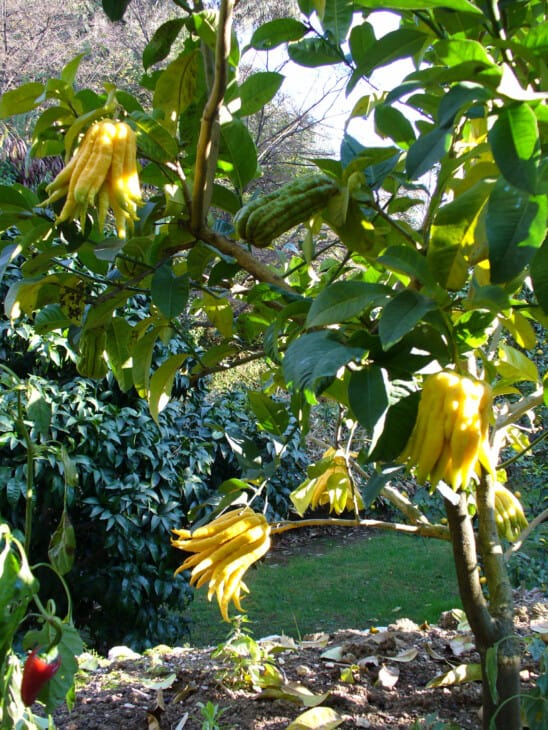
Known by a couple of names, the Buddha’s hand earned this one because of its fruit resembling praying hands. Starting out with a purple tint, the fruit of the Buddha’s hand tree becomes entirely yellow as it matures, while the flowers are typically white. A ripe fruit will have anywhere between 5 and 20 shoots or ‘fingers.’
These fruits grow as long as 12 inches, while the tree is relatively short, maxing out at around 10 feet. The fruit is fragrant but sour citrus fruit with many uses. Some use this fruit to flavor dishes, while others use it to make tea or to scent cosmetics. The fruit doesn’t have any pulp inside like other citrus fruits. Instead, it is usually zested.
The Buddha’s hand tree originated in India but found its way to China and other parts of Asia. The Japanese believe it is a symbol of good fortune. This makes it a popular gift on New Year’s when they wish for good fortune for the upcoming year. Unfortunately, they cannot survive cold temperatures and will wither in frost.







